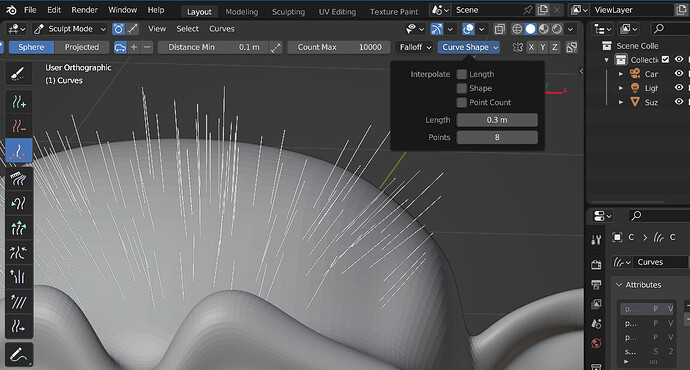Procedural Hair
November 24, 2022
As a follow up of the last module meeting Daniel Bystedt organized a meeting to find the priorities (nodes and node groups) for procedural hair for Blender 3.5.
Present:
- Andy Goralczyk
- Dalai Felinto
- Daniel Bystedt
- Jacques Lucke
- Lukas Tonne
The topics are in order of priority (from higher to lower):
- Distribute child splines on faces
- Hair info
- Clump splines
- Hair frizz
- Curl hair
- Smooth hair
- Braids
- Push hair outside surface
- Rotate hair
- Bend hair
- Straighten hair
- Shrinkwrap hair
- Interpolate shape
Feedback:
- Distribute child curves on faces
- This is the basic interpolation needed for working with parent/child hair workflow.
- Hair info
- Should be a node group if possible, before becoming a built-in node
- Clump splines
- Parting should be doable via attributes within a data-set.
- The clump criteria (e.g., distance) should be an option for the node.
- Geodesic distance node would help, ahtough slow
- Hair frizz
- Keeping the distance between segments is needed regardless.
- It can be one of the building blocks for the hair frizz group.
- Keeping the distance between segments is needed regardless.
- Curl hair
- The frequency, amplitude and length should be inputs that can be mapped.
- The total length of the curly hair is important in some cases (to preserve the hair length).
- Smooth hair
- It doesn’t try to align the hair tip with the surface.
- Preserve the overall length or;
- Lock the being/end of the curves.
- Use case/example:
- If you have a lot of frizz, Daniel would randomly select hair and smooth them out, so it gets a less uniform look.
- It helps for final tweaks without having to do changes on the begin of a node-tree (before the frizz is applied).
- Braids
- Braids and corn rows can use the same system.
- Push hair outside surface
- This is one of the most complicated and important topics.
- This can be computational expensive.
- A generic solution may be tricky, but a simple system may be possible for some use cases.
- Rotate hair
- Spin the hair around the root around the surface normal.
- Useful to get random overlaps.
- Bend hair
- The simple case is to bend long hair tips.
- Nice for moustaches (not french mustaches).
- For long hair the root point is not relevant.
- It may be better to pick a few of the last control points, but it is also dependent of the control point density.
- Shrinkwrap hair
- Useful for some animals, where the hair gets really close to the legs.
- Interpolate shape
- Useful for animating art-directed hair poses.
- Straighten hair
- Same as the puff brush.


